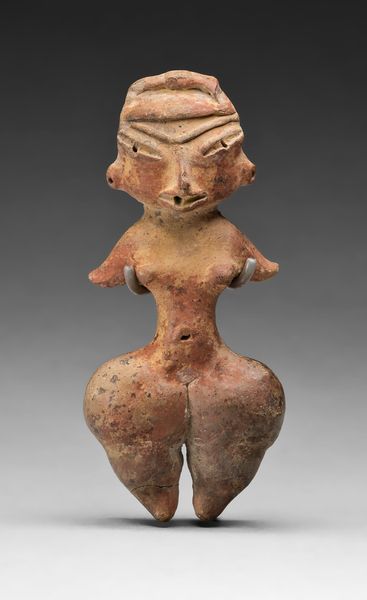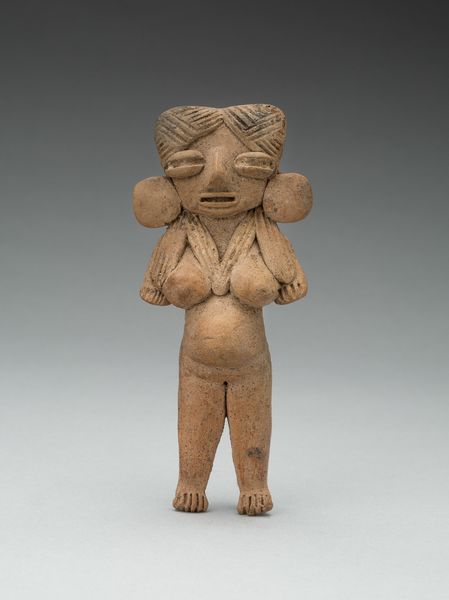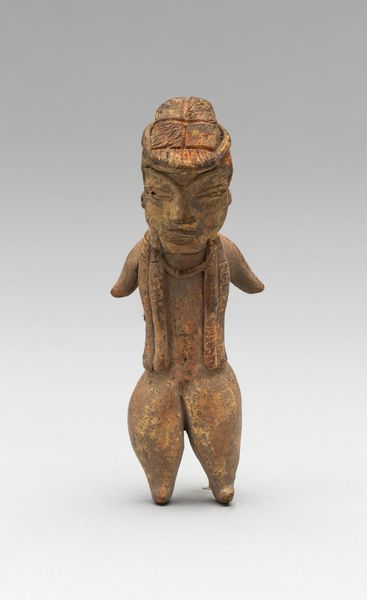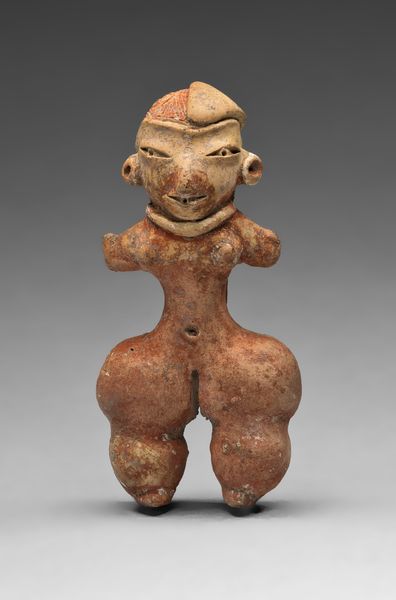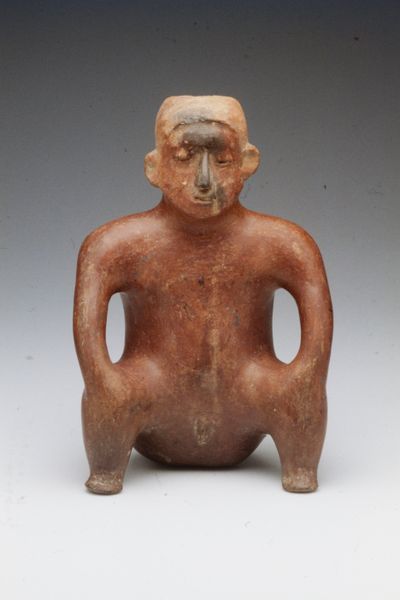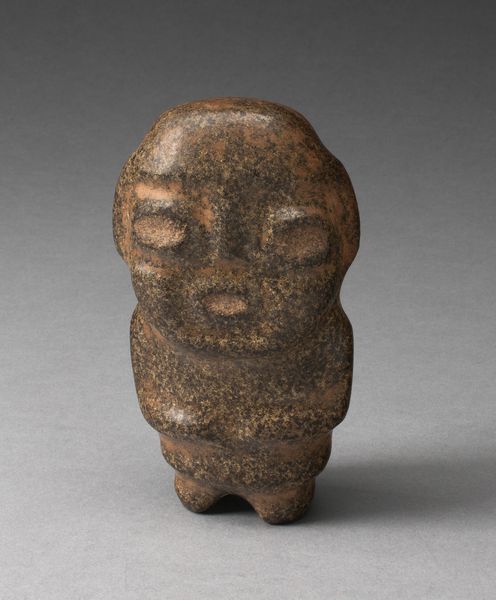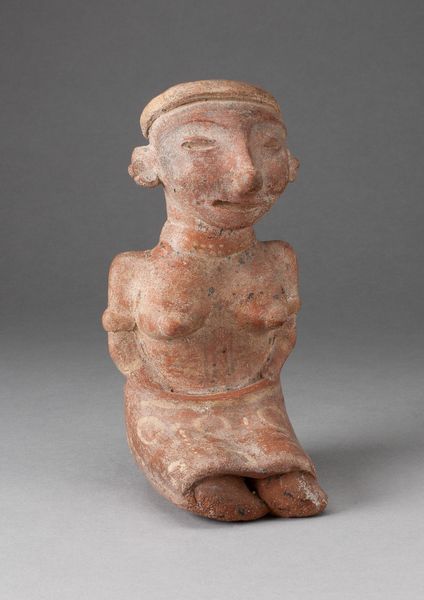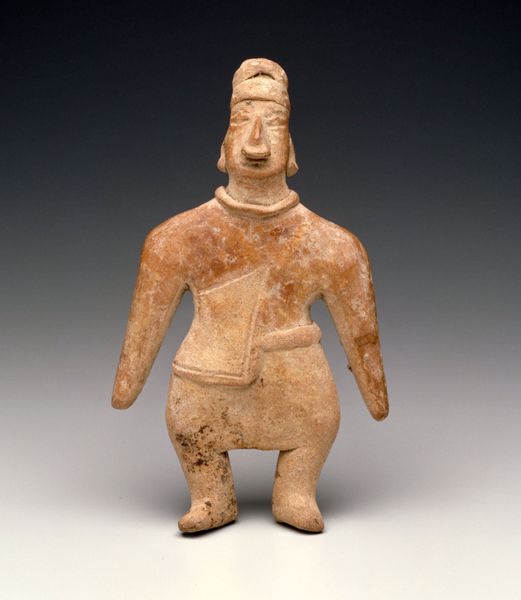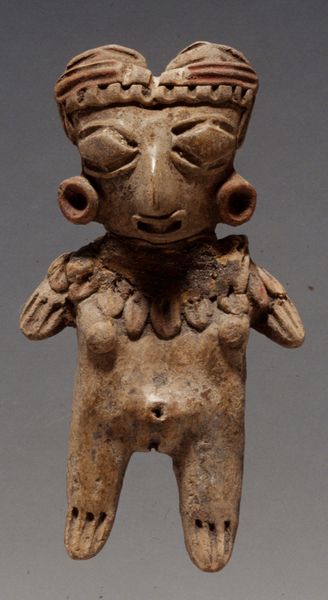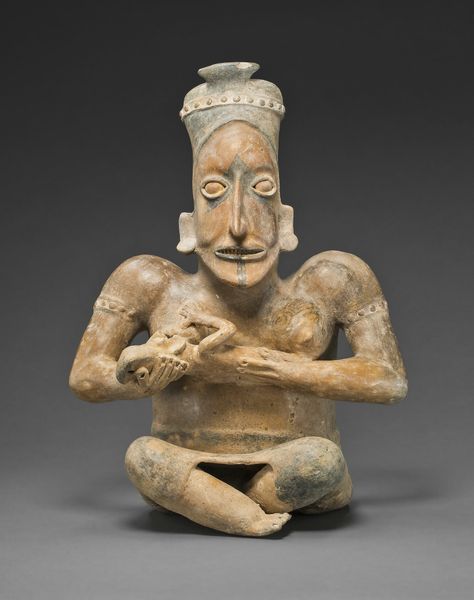
ceramic, sculpture, terracotta
#
sculpture
#
ceramic
#
figuration
#
sculpture
#
terracotta
#
indigenous-americas
Dimensions: H. 8.9 cm (3 1/2 in.)
Copyright: Public Domain
Editor: Here we have a ceramic figure from Tlatilco, titled "Seated Figurine", dating from around 500. It's currently held at the Art Institute of Chicago. It's such a strange and fascinating form; the open mouth and gesture of the arms immediately grabbed my attention. How would you interpret this piece from a formalist perspective? Curator: My focus turns immediately to the treatment of the figure itself. Note the stark simplicity of the forms. The cylindrical torso and limbs reduce the human figure to its most basic geometric components. The surface texture is particularly interesting. Do you notice the contrast between the smoother areas and the almost rough, weathered patches? This variance creates a tactile quality, doesn't it? Editor: I do. It makes me wonder about the original intention of the artist; was this deliberate or accidental based on the material used? Curator: An important question! I'd argue the cracks and imperfections, almost like controlled breaks within the artistic strategy, accentuate the raw, material quality of the ceramic. Further analysis reveals an asymmetry within the "head". How does the intentional imbalance affect the reading of the piece for you? Editor: It introduces tension and an interesting off-kilter element within an otherwise very frontal and symmetrical design. It emphasizes the handmade, one-off aspect too. Curator: Precisely. And by studying the interplay between these aspects – symmetry and asymmetry, smooth and rough – we start to decode the visual language. A powerful and engaging object emerges from these considerations, wouldn't you say? Editor: Yes, absolutely! Looking through the lens of form and material, I appreciate the figurine even more. Thank you. Curator: And thank you. Focusing solely on the formal structure allows for such potent analysis, one often missed in more subjective or thematic interpretations.
Comments
No comments
Be the first to comment and join the conversation on the ultimate creative platform.


